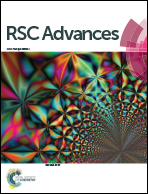Examination of the Gouy–Chapman theory for double layer capacitance in deionized latex suspensions
Abstract
Electric double layer capacitance at platinum electrodes is controlled by dipole moments of the solvent in the diffuse layer rather than that by ionic distribution, being different from that at mercury electrodes. The controlling step is found by comparing capacitance vs. electrode potential curves in ionic solutions with those in deionized latex suspensions. The curves do not involve a valley shape of Gouy–Chapman (GC)-Stern's type until ionic concentrations are less than 0.05 mM, because measured capacitance is controlled by the inner layer. The valley shape at low concentrations can be measured in deionized sulfonic latex suspensions, whose conductance is brought about by the ionic latex particles rather than the dissociated hydrogen ions. An expression for the capacitance by the ionic latex suspension is derived, which is demonstrated to be the same form of the potential dependence as for mono-valence ions. Ac-impedance data are obtained at parallel polycrystalline platinum wires without an insulating shield. The valley shape is found, which is analyzed by the inverse plot of the capacitance against the hyperbolic cosine of the dimensionless applied potential. The linearity of the plots seems to support the GC-theory, but the capacitance values are much larger than those calculated from the GC-theory. The extra amount can be attributed quantitatively to the orientation of solvent molecules by combining Debye's theory with the GC-theory.


 Please wait while we load your content...
Please wait while we load your content...